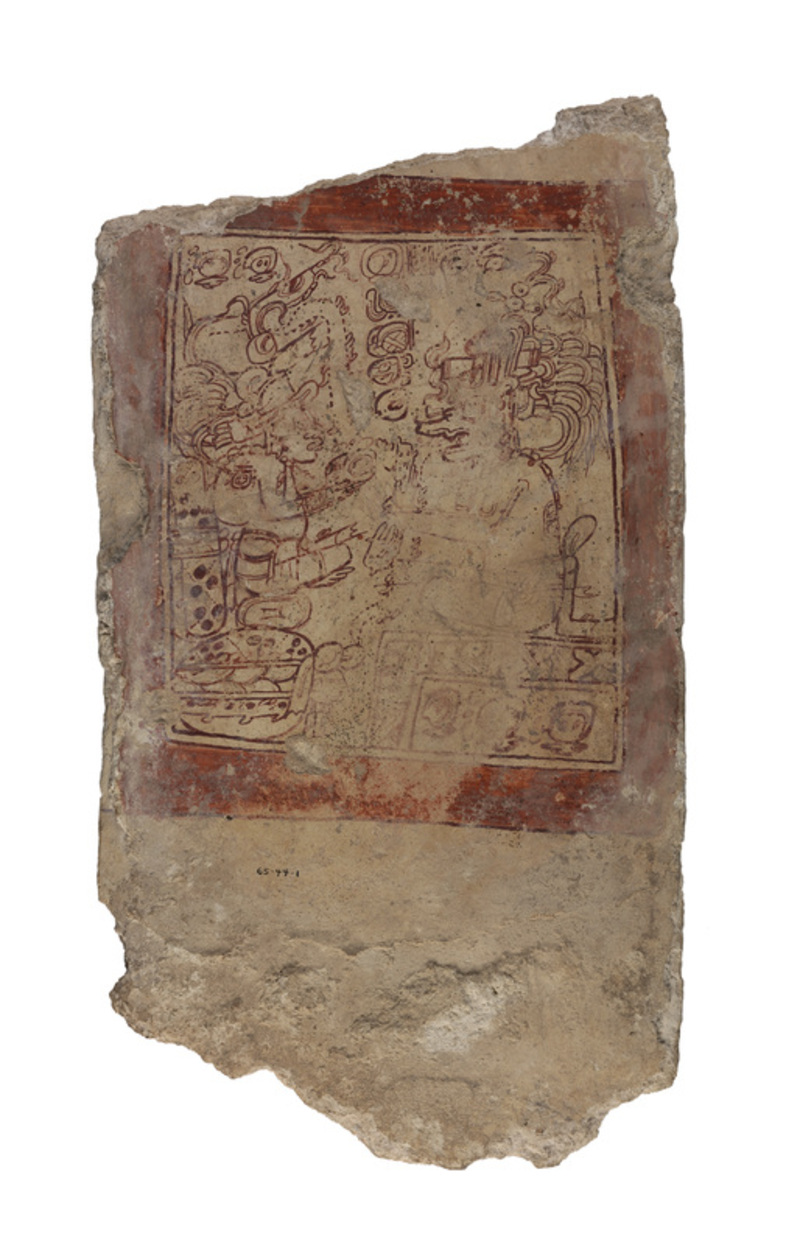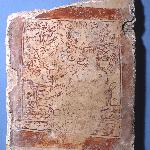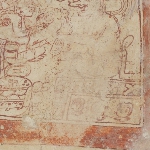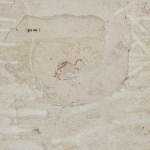Capstone
65-44-1
Location: On Display in the Mexico and Central America Gallery
From: Mexico (Central America) | Yucatan (uncertain)
Curatorial Section: American
| Object Number | 65-44-1 |
| Current Location | Mexico and Central America Gallery - On Display |
| Culture | Maya | Lowland Maya |
| Provenience | Mexico (Central America) | Yucatan (uncertain) |
| Culture Area | Central American |
| Date Made | 600-900 CE |
| Section | American |
| Materials | Stone | Stucco | Paint |
| Technique | Painted |
| Description | A scene is within a rectangular solid red ochre frame, on the inside with double-lining in red; single red outlining occurs at "top" and "bottom" of the frame only. ("top" and "bottom" are with reference to the scene) The field for this, limited by the inner double-lining if the frame, is about 32 cms. high and 24.5 cms. wide. Remains of plaster indicated a turn-up along the "left" and none on the "right" side, and a less rectangular one 16 cms. below the frame. Reconstructing symmetrically, the exposure of this and other unknown capstones, from side to side, was about 67 cms. and this one was at one end of the "ceiling". The function as capstone seems certain. On the left and facing right we see a hunchback, normally an associate of the Maize deity, who here wears stylized maize foliation in his headdress. He sits on a cushion atop a larger jaguar hide covered seat with a matching backrest.In his hands he holds two hieroglyphs and a number, together reading JUUN-IHK'-K'AN "One Black and Yellow." Color combinations such as this--most especially green and yellow--are poetical references to "verdant growth" and thus to successful harvests, Facing right, he sits in front of K'awiil, a personification of lightning associated with power and fertiltiy, who sits on a sky-band throne. Three hieroglyphs are encased by this throne, The figure on the left holds a hieroglyph in his hand, that on the right seems to be holding some non-glyphic object before his body (the hand itself is worn away and was conceivably gesturing, as is common). Eventually more details may be recovered. TEXT: A group of glyphs forming an inverted "L" panel is at upper center and right, i.e. partly above the right figure. They have been interpreted by Christopher Jones, confirmed by Linton Satterthwaite, as probably recording the Maya date " 9 Mulac the day 11 Uo, Death God...in Head 14 (Katun) 2 Ahau." Its long count equivalent in the 11-16 correlation of Long Count and Christian dates falls in A.D. 1001, the Long Count date being 10.8.13.5.9 9 Mulac 12 Uo. There are two non-calendrical glyphs above the left figure. A glyph with co-efficient 10 above and co. 1 to the right appears on what seems to be a burden on the back of this figure. |
| Height | 5.5 cm |
| Length | 60 cm |
| Width | 32 cm |
| Credit Line | Purchased from Robert Huber, 1965 |
Report problems and issues to digitalmedia@pennmuseum.org.





